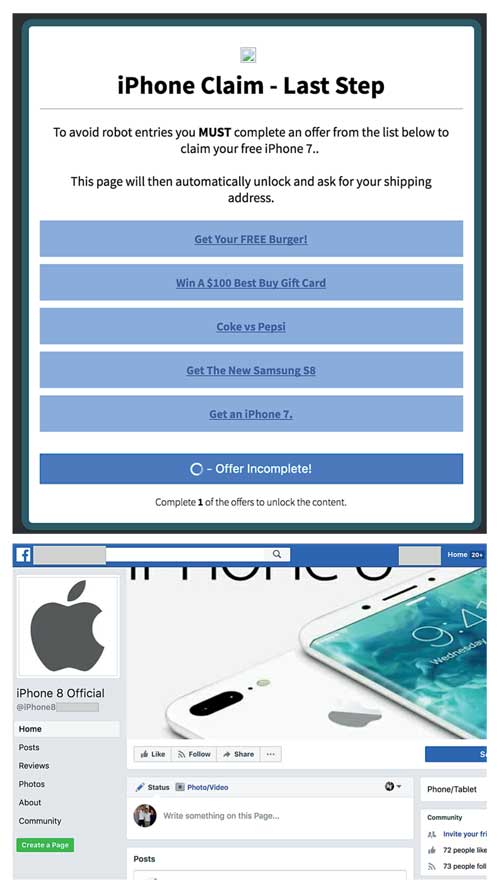Monday Feb 24, 2025
Monday Feb 24, 2025
Tuesday, 24 October 2017 00:00 - - {{hitsCtrl.values.hits}}


Apple’s annual product releases attract a frenzy of attention. But this year as curious fans logged onto social media to weigh in on the newly released iPhone 8/X, cybercriminals had already set up shop, hoping to exploit the hype.
ZeroFOX Alpha Team reports an uptick in malicious content involving iPhones actively spreading across many popular social networks. Most of the attacks offer a “giveaway” of one of the new iPhones, encouraging victims to click a malicious link, follow a profile, like or share certain content, or submit personally identifiable information (PII). The high price tag of the new devices, between $699 to $999, together with the trustworthy Apple brand, makes this type of social engineering attack particularly dangerous to the average social media user.
The automated ‘ZeroFOX Platform’ has identified 532 fraudulent iPhone social accounts and counting, most of which take one of a few different forms:
Scams like these are nothing new. Attackers regularly “newsjack,” tailoring their attacks to whatever is trending online and in the media, be it a holiday, the latest gaming fad, a new popular product or internet trend. Social media is abused by scammers to spread these attacks to the broadest possible audience, all while tailoring their group of targets using hashtags or abusing the publicly available follower list of popular brands, celebrities and other accounts. Scammers can rapidly segment their victim population, customise the attack, build fake accounts and launch their scam campaign at scale.
ZeroFOX Alpha Team recommends the following:
Discover Kapruka, the leading online shopping platform in Sri Lanka, where you can conveniently send Gifts and Flowers to your loved ones for any event including Valentine ’s Day. Explore a wide range of popular Shopping Categories on Kapruka, including Toys, Groceries, Electronics, Birthday Cakes, Fruits, Chocolates, Flower Bouquets, Clothing, Watches, Lingerie, Gift Sets and Jewellery. Also if you’re interested in selling with Kapruka, Partner Central by Kapruka is the best solution to start with. Moreover, through Kapruka Global Shop, you can also enjoy the convenience of purchasing products from renowned platforms like Amazon and eBay and have them delivered to Sri Lanka.
Discover Kapruka, the leading online shopping platform in Sri Lanka, where you can conveniently send Gifts and Flowers to your loved ones for any event including Valentine ’s Day. Explore a wide range of popular Shopping Categories on Kapruka, including Toys, Groceries, Electronics, Birthday Cakes, Fruits, Chocolates, Flower Bouquets, Clothing, Watches, Lingerie, Gift Sets and Jewellery. Also if you’re interested in selling with Kapruka, Partner Central by Kapruka is the best solution to start with. Moreover, through Kapruka Global Shop, you can also enjoy the convenience of purchasing products from renowned platforms like Amazon and eBay and have them delivered to Sri Lanka.